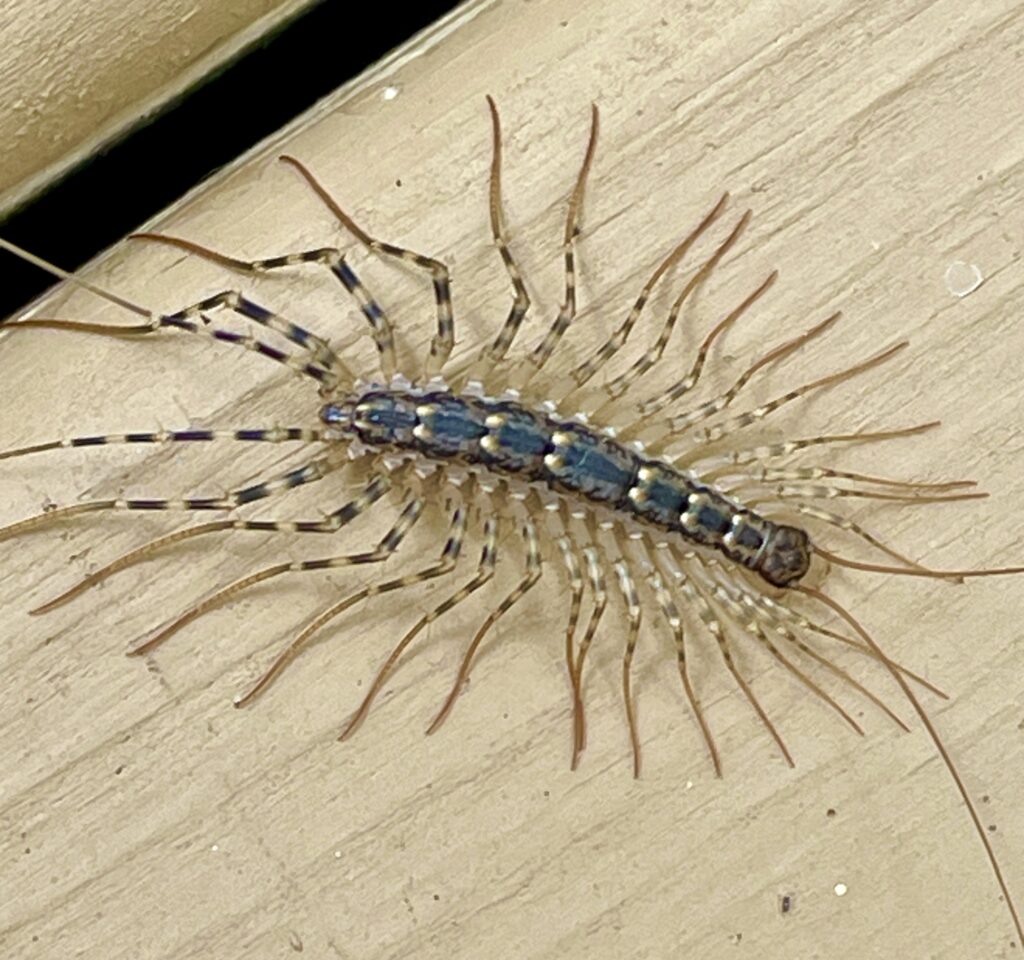
By Mary Reid Barrow
When I found this beautiful critter crawling on my front porch, I was entranced.
Then when I learned that this work of art from nature, symmetrical in every way, was just a centipede, I was a little deflated.
I thought I know what a centipede was. It was a not very colorful creature with lots of short legs up and down its body.
It certainly wasn’t this critter with the long legs and even longer antennae and with perfectly placed stripes on its legs and spots on its body.
This centipede’s body was about an inch long, but its legs and antennae put it closer to 2-3 inches.
A Google search turned up that it was a house centipede, totally foreign to me, but very prevalent, I gather. I wondered if I am the only person who hasn’t seen one before.
My go-to source for all things entomological is Stuart McCausland. He agrees they are beautiful critters, and he also has had them in his house before.
“And I would now,” he added. “except my wife Linda does not feel the same! I really like the fluid way these centipedes run.”
Turns out the house centipede is non-native. It arrived from the Mediterranean area, more than 100 years ago. It was quickly dubbed the house centipede because it lives in damp areas, whether a woodpile or a damp space in your house.
It is said house centipedes don’t hurt you, or your clothes or your food. They are only after the insects that you don’t want in your house either, insects like cockroaches and spiders.
In fact, they are nocturnal so you would rarely see them, inside or out anyway. This one has probably been living under my porch and all our damp weather brought it out in the open.
Like Stuart’s wife, I am not sure I want to see more of my discovery, despite its good looks. I told the house centipede that it was beautiful, but I would just as soon it stayed under my porch, not in my house.
Reader Notes
After reading the blog about Denise Maples’ mulberry tree in Kempsville, Lynne Eklund wrote that when she lived on Oasts Creek in Norfolk, she had a mulberry tree that “hosted all the fur ornaments,” that Maples photographed on her tree. In addition “the snapping turtles in the creek thoroughly enjoyed snacking on the berries that fell onto the mud shore or floated along in the water,” Lynne